
Research, News, and Market Data on KTOS
November 3, 2022 at 4:01 PM EDT
SAN DIEGO, Nov. 03, 2022 (GLOBE NEWSWIRE) — Kratos Defense & Security Solutions, Inc. (Nasdaq:KTOS), a leading National Security Solutions provider, today reported its third quarter 2022 financial results. For the third quarter of 2022, Kratos reported Revenues of $228.6 million, Operating Loss of $3.6 million, Net Loss of $8.0 million, Adjusted EBITDA of $20.0 million and a book to bill ratio of 1.1 to 1.0.
Included in Net Loss is a $6.4 million charge, $3.4 million related to certain non-recoverable costs, including rate and cost growth items resulting from an inability to hire the required planned direct labor base, both internally and by our subcontractors, to execute on our backlog, due to a continuing challenging industry environment in both hiring and retaining skilled manufacturing personnel in our C5ISR business and $3 million from non-recoverable indirect cost rate growth resulting from a smaller than planned direct labor base due to delays in customer program execution and awards in our Training Solutions business. We have recorded this charge as the Department of Defense (DoD) position remains that Requests for Equitable Adjustment (REAs) will not be accepted by contractors like Kratos for inflation related and other increased costs, and as Kratos’ contract mix in the C5ISR and Training Solutions businesses is substantially firm fixed price, we are unable to absorb and pass on to our customers such unanticipated costs in our programs, contracts and rate structures and remain competitive, including as certain program execution work has either not yet commenced or has just begun.
Third quarter 2022 Operating Loss includes non-cash stock compensation expense of $6.6 million, and Company-funded Research and Development expense of $9.6 million, primarily reflecting significant ongoing development efforts being made, including in our Space and Satellite business to develop our virtual, software-based OpenSpace ground station solution.
Kratos reported a third quarter 2022 GAAP loss per share of $0.06, which includes the $6.4 million charge noted above, compared to a Net Loss of $2.4 million and a GAAP loss per share of $0.02 for the third quarter of 2021. Adjusted EPS was $0.08 for the third quarter of 2022, compared to $0.09 for the third quarter of 2021.
Third quarter 2022 Revenues of $228.6 million, which increased $28.0 million, or 14.0 percent, from third quarter 2021 Revenues of $200.6 million, were adversely impacted by continuing and increased supply chain disruptions and increased material costs, COVID-related employee absenteeism and increased challenges and costs associated with hiring, obtaining and retaining qualified employees, which resulted in approximately $11.3 million of third quarter 2022 revenues being deferred into future periods, with approximately $5.9 million of associated operating income, including increased inflationary costs. Third quarter 2022 revenues include an aggregate contribution of $30.2 million from the recent acquisitions of Cosmic Advanced Engineered Solutions, Inc. (Cosmic AES), CTT, Inc. (CTT), and the Engineering Division of Southern Research Institute (SRE), organic revenue growth in our C5ISR, Turbine Technologies, Microwave Products, and Rocket Support businesses, primarily offset by reduced volume in our Unmanned Systems and Training Solutions businesses.
Third quarter 2022 Cash Flow Used in Operations was $2.8 million. Free Cash Flow Used in Operations was $15.7 million, after funding $12.9 million of capital expenditures, including in our Unmanned Systems, Space, Satellite and Cyber and Turbine Technologies business areas.
For the third quarter of 2022, Kratos’ Unmanned Systems Segment (KUS) generated Revenues of $50.0 million, as compared to $61.3 million in the third quarter of 2021, primarily reflecting reduced tactical drone related activity as compared to 2021. KUS Operating Loss was $0.1 million in the third quarter of 2022 compared to KUS Operating Income of $2.6 million in the third quarter of 2021, reflecting reduced volumes, a less favorable mix of revenues, including an increase in development programs which typically generate lower margins, an increase in SG&A costs of approximately $0.2 million resulting primarily from increased headcount, and an increase of R&D expenses of approximately $1.0 million.
KUS Adjusted EBITDA for the third quarter of 2022 was $2.1 million, compared to third quarter 2021 KUS Adjusted EBITDA of $4.7 million, reflecting reduced volume, increases in certain development programs which typically generate lower margins and increases in SG&A, R&D, supply chain related and employee costs.
KUS’s book-to-bill ratio for the third quarter of 2022 was 1.0 to 1.0 and 1.0 to 1.0 for the last twelve months ended September 25, 2022, with bookings of $221.3 million for the twelve months ended September 25, 2022. Total backlog for KUS at the end of the third quarter of 2022 was $202.4 million compared to $203.3 million at the end of the second quarter of 2022.
For the third quarter of 2022, Kratos’ Government Solutions Segment (KGS) reported Revenues of $178.6 million, compared to Revenues of $139.3 million in the third quarter of 2021. The increased revenues include the aggregate contribution of approximately $30.2 million from the recently acquired Cosmic AES, CTT and SRE, and organic revenue growth in our C5ISR, Turbine Technologies, Microwave Products, and Rocket Support businesses, primarily offset by a reduction of $2.8 million in our Training Solutions business. On a proforma basis, excluding the Training Solutions business, KGS revenues grew organically 8.9 percent or $11.8 million, from $133.1 million in the third quarter of 2021 to $144.9 million in the third quarter of 2022.
KGS reported operating income of $3.3 million in the third quarter of 2022, compared to $14.6 million in the third quarter of 2021. Third quarter 2022 operating income included the charge for non-recoverable costs of $6.4 million in our C5ISR and Training Solutions businesses described above, as well as a $0.6 million charge related to excess Training Solutions facilities.
Kratos’ Space, Satellite and Cyber business generated Revenues of $85.9 million in the third quarter of 2022, compared to $72.0 million in the third quarter of 2021. Excluding revenues generated of $15.6 million from the recent Cosmic AES acquisition, revenues for our Space, Satellite and Cyber business were $70.3 million in the third quarter of 2022, down approximately $1.7 million reflecting the wind-down of a federal services satellite contract in 2021.
Excluding the impact of the $6.4 million charge related to non-recoverable costs and the $0.6 million charge related to excess Training Solutions facilities, third quarter 2022 KGS Adjusted EBITDA was $17.9 million, compared to third quarter 2021 KGS Adjusted EBITDA of $19.1 million.
For the third quarter of 2022, KGS reported a book-to-bill ratio of 1.1 to 1.0, with a book to bill ratio of 1.2 to 1.0 for the twelve months ended September 25, 2022, and bookings of $807.6 million for the twelve months ended September 25, 2022. Included in KGS is Kratos’ Space, Satellite and Cyber business, which reported a book to bill ratio of 1.1 to 1.0 for the third quarter of 2022, and a book to bill ratio of 1.2 to 1.0 for the twelve months ended September 25, 2022. Bookings for the Space, Satellite and Cyber business for the last twelve months ended September 25, 2022, were $406.2 million. KGS’s total backlog at the end of the third quarter of 2022 was $866.6 million, as compared to $846.9 million at the end of the second quarter of 2022.
For the third quarter of 2022, Kratos reported consolidated bookings of $246.5 million and a book-to-bill ratio of 1.1 to 1.0, with consolidated bookings of $1.029 billion and a book-to-bill ratio of 1.2 to 1.0 for the last twelve months ended September 25, 2022. Backlog on September 25, 2022 was $1.07 billion, as compared to $1.05 billion at June 26, 2022, and Kratos’ bid and proposal pipeline was $9.9 billion at September 25, 2022, as compared to $9.9 billion at June 26, 2022. Backlog at September 25, 2022 was comprised of funded backlog of $696.1 million and unfunded backlog of $372.8 million.
Eric DeMarco, Kratos’ President and CEO, said, “In the third quarter, Kratos successfully executed on what we can control in a continued and increasingly difficult operating environment, including a 1.1 to 1.0 book to bill ratio and the recent MACH-TB Hypersonic program award with our partner Dynetics, which could be significant related to Kratos’ Zeus launch systems and Erinyes vehicles. Expected upcoming awards for Kratos include an additional new hypersonic related program award, two new Valkyrie related tactical drone system awards from two new customers for multiple aircraft and a large OpenSpace virtualized satellite system program award.”
Mr. DeMarco continued, “Since our last report to you, we were informed that certain Kratos satellite program related software deliverables expected to be acquired by an existing government customer have been delayed to a future period and we were informed by a customer that funding is no longer available for the continuation of a certain, non-Valkyrie related drone program we have been working on, both which were previously forecast as significant contributors to our fourth quarter 2022 financial forecast. We have also determined that as a result of the continuing incredibly tight labor market for qualified machinists and skilled production personnel, including those with security clearances, that we will not achieve by this fiscal year end our previous forecast net increase headcount target to execute on our backlog and maintain our indirect rates. We have reflected the impact of each of these and other items, including inflation, supply chain, etc., in today’s third quarter financial report and our updated fiscal 2022 forecast.”
Mr. DeMarco concluded, “We have taken action to address these matters, including continuing to incorporate in our new proposals and contract awards cost and rate increases to address the inflationary environment, including specifically as related to higher labor rates and we have adjusted the organization in certain areas to address customer related delays, funding and other issues. By taking these actions now, having a 1.2 to 1.0 LTM book to bill ratio with multiple large, new programs ramping and maintaining a record combined backlog and opportunity pipeline, we continue to forecast future growth for the Company, including base case full year 2023 over 2022 10 percent revenue growth and increased margins, with potential accelerated growth opportunities in the tactical drone, space, satellite, rocket and hypersonic system areas.”
Financial Guidance
Our fourth quarter and Fiscal Year 2022 financial guidance we are providing today includes our current forecasted business mix, and our assumptions, including as related to: employee sourcing, hiring and retention; manufacturing, production and supply chain disruptions; and parts shortages and related continued significant cost and price increases, including for employees, materials and components that are impacting the industry and Kratos. The range of our expected fourth quarter 2022 revenues includes assumptions of forecasted execution including the number of new qualified personnel expected to be retained to execute on our programs and contracts, as well as expected contract awards. Our revised Fiscal Year 2022 cash flow guidance also includes continued advanced purchases of inventory in an attempt to mitigate supply chain disruptions, which are not currently expected to be converted to cash through the sales process until the second half of 2023.
On October 1, 2022, the U.S. Federal Government began operating under a Continuing Resolution Authorization (CRA) through at least December 16, 2022, with no Federal Fiscal 2023 Budget or DoD budget being in place. Under a CRA, federal spending and its composition is substantially held consistent with the previous year’s budget, with no new contract awards, no increased production or spending on existing programs and no transition from development to production contracts, or from low-rate initial production to full rate production being allowed, all of which may impact Kratos and our current fourth quarter and fiscal 2023 financial expectations. The longer a CRA period is extended, the greater the impact on the industry, our customers and Kratos.
Throughout the third and fourth quarter of 2022, our industry and Kratos continue to experience the effects of continuing supply chain disruptions and significant cost increases and inflation, including on our employees, consultants, subcontractors, vendors, suppliers, customers, etc., and an acute labor shortage of qualified personnel, including those requiring security clearances, to perform on programs and contracts.
We expect this difficult operating environment and its impact on the industry, our operations and our ability to forecast to continue for the foreseeable future. Following is our fourth quarter and revised full year 2022 guidance along with a reconciliation from our full year 2022 guidance provided in August 2022 to our current guidance range.

Management will discuss the Company’s third quarter 2022 financial results, as well as its fourth quarter and full year 2022 guidance on a conference call beginning at 2:00 p.m. Pacific (5:00 p.m. Eastern) today. The call will be available at www.kratosdefense.com. Participants may register for the call using this Online Form. Upon registration, all telephone participants will receive the dial-in number along with a unique PIN that can be used to access the call. For those who cannot access the live broadcast, a replay will be available on Kratos’ website.
About Kratos Defense & Security Solutions
Kratos Defense & Security Solutions, Inc. (NASDAQ:KTOS) develops and fields transformative, affordable technology, platforms, and systems for United States National Security related customers, allies, and commercial enterprises. Kratos is changing the way breakthrough technologies for these industries are rapidly brought to market through proven commercial and venture capital backed approaches, including proactive research, and streamlined development processes. At Kratos, affordability is a technology, and we specialize in unmanned systems, satellite communications, cyber security/warfare, microwave electronics, missile defense, hypersonic systems, training and combat systems and next generation turbo jet and turbo fan engine development. For more information go to www.kratosdefense.com.
Notice Regarding Forward-Looking Statements
This news release contains certain forward-looking statements that involve risks and uncertainties, including, without limitation, express or implied statements concerning the Company’s expectations regarding its future financial performance, including the Company’s expectations for its fourth quarter and full year 2022 revenues, R&D, operating income, depreciation, amortization, stock based compensation expense, and Adjusted EBITDA, and full year 2022 operating cash flow, capital expenditures and other investments, and free cash flow use, the Company’s future growth trajectory and ability to achieve improved revenue mix and profit in certain of its business segments and the expected timing of such improved revenue mix and profit, the Company’s expectation of ramp on projects and that investments in its business will result in an increase in the Company’s market share and total addressable market and position the Company for significant future organic growth, profitability, cash flow and an increase in shareholder value, the Company’s bid and proposal pipeline, demand for its products and services, including the Company’s alignment with today’s National Security requirements, ability to successfully compete and expected new customer awards, including the magnitude and timing of funding and the future opportunity associated with such awards, including in the tactical drone and satellite communication areas, performance of key contracts and programs, including the timing of production and demonstration related to certain of the Company’s contracts and product offerings, the impact of the Company’s restructuring efforts and cost reduction measures, including its ability to improve profitability and cash flow in certain business units as a result of these actions and to achieve financial leverage on fixed administrative costs, benefits to be realized from the Company’s net operating loss carry forwards, the availability and timing of government funding for the Company’s offerings, including the strength of the future funding environment, the short-term delays that may occur as a result of Continuing Resolutions or delays in DoD budget approvals, timing of LRIP and full rate production related to the Company’s unmanned aerial target system offerings, as well as the level of recurring revenues expected to be generated by these programs once they achieve full rate production, market and industry developments, and the current estimated impact of COVID-19 and employee absenteeism, supply chain disruptions, availability of an experienced skilled workforce, inflation and increased costs, and delays on our financial projections, industry, business and operations, including projected growth. Such statements are only predictions, and the Company’s actual results may differ materially from the results expressed or implied by these statements. Investors are cautioned not to place undue reliance on any such forward-looking statements. All such forward-looking statements speak only as of the date they are made, and the Company undertakes no obligation to update or revise these statements, whether as a result of new information, future events or otherwise. Factors that may cause the Company’s results to differ include, but are not limited to: risks to our business and financial results related to the reductions and other spending constraints imposed on the U.S. Government and our other customers, including as a result of sequestration and extended continuing resolutions, the Federal budget deficit and Federal government shut-downs; risks of adverse regulatory action or litigation; risks associated with debt leverage and cost savings and cash flow improvements expected as a result of the refinancing of our Senior Notes; risks that our cost-cutting initiatives will not provide the anticipated benefits; risks that changes, cutbacks or delays in spending by the U.S. DoD may occur, which could cause delays or cancellations of key government contracts; risks of delays to or the cancellation of our projects as a result of protest actions submitted by our competitors; risks that changes may occur in Federal government (or other applicable) procurement laws, regulations, policies and budgets; risks of the availability of government funding for the Company’s products and services due to performance, cost growth, or other factors, changes in government and customer priorities and requirements (including cost-cutting initiatives, the potential deferral of awards, terminations or reduction of expenditures to respond to the priorities of Congress and the Administration, or budgetary cuts resulting from Congressional committee recommendations or automatic sequestration under the Budget Control Act of 2011, as amended); risks that the UAS and UGS markets do not experience significant growth; risks that products we have developed or will develop will become programs of record; risks that we cannot expand our customer base or that our products do not achieve broad acceptance which could impact our ability to achieve our anticipated level of growth; risks of increases in the Federal government initiatives related to in-sourcing; risks related to security breaches, including cyber security attacks and threats or other significant disruptions of our information systems, facilities and infrastructures; risks related to our compliance with applicable contracting and procurement laws, regulations and standards; risks related to the new DoD Cybersecurity Maturity Model Certification (CMMC); risks relating to the ongoing conflict in Ukraine; risks related to contract performance; risks related to failure of our products or services; risks associated with our subcontractors’ or suppliers’ failure to perform their contractual obligations, including the appearance of counterfeit or corrupt parts in our products; changes in the competitive environment (including as a result of bid protests); failure to successfully integrate acquired operations and competition in the marketplace, which could reduce revenues and profit margins; risks that potential future goodwill impairments will adversely affect our operating results; risks that anticipated tax benefits will not be realized in accordance with our expectations; risks that a change in ownership of our stock could cause further limitation to the future utilization of our net operating losses; risks that we may be required to record valuation allowances on our net operating losses which could adversely impact our profitability and financial condition; risks that the current economic environment will adversely impact our business, including with respect to our ability to recruit and retain sufficient numbers of qualified personnel to execute on our programs and contracts, as well as expected contract awards and risks related to increasing interest rates; currently unforeseen risks associated with COVID-19 and risks related to natural disasters or severe weather. These and other risk factors are more fully discussed in the Company’s Annual Report on Form 10-K for the period ended December 26, 2021, and in our other filings made with the Securities and Exchange Commission.
Note Regarding Use of Non-GAAP Financial Measures and Other Performance Metrics
This news release contains non-GAAP financial measures, including Adjusted earnings per share (computed using income from continuing operations before income taxes, excluding income (loss) from discontinued operations, excluding income (loss) attributable to non-controlling interest, excluding depreciation, amortization of intangible assets, amortization of capitalized contract and development costs, stock-based compensation expense, acquisition and restructuring related items and other, which includes, but is not limited to, legal related items, non-recoverable rates and costs, and foreign transaction gains and losses, less the estimated impact to income taxes) and including Adjusted EBITDA (which includes net income (loss) attributable to noncontrolling interest and excludes, among other things, losses and gains from discontinued operations, acquisition and restructuring related items, stock compensation expense, foreign transaction gains and losses, and the associated margin rates). Additional non-GAAP financial measures include Free Cash Flow from Operations computed as Cash Flow from Operations less Capital Expenditures and Adjusted EBITDA related to our KUS and KGS businesses. Kratos believes this information is useful to investors because it provides a basis for measuring the Company’s available capital resources, the actual and forecasted operating performance of the Company’s business and the Company’s cash flow, excluding non-recurring items and non-cash items that would normally be included in the most directly comparable measures calculated and presented in accordance with GAAP. The Company’s management uses these non-GAAP financial measures, along with the most directly comparable GAAP financial measures, in evaluating the Company’s actual and forecasted operating performance, capital resources and cash flow. Non-GAAP financial measures should not be considered in isolation from, or as a substitute for, financial information presented in compliance with GAAP, and investors should carefully evaluate the Company’s financial results calculated in accordance with GAAP and reconciliations to those financial results. In addition, non-GAAP financial measures as reported by the Company may not be comparable to similarly titled amounts reported by other companies. As appropriate, the most directly comparable GAAP financial measures and information reconciling these non-GAAP financial measures to the Company’s financial results prepared in accordance with GAAP are included in this news release.
Another Performance Metric the Company believes is a key performance indicator in our industry is our Book to Bill Ratio as it provides investors with a measure of the amount of bookings or contract awards as compared to the amount of revenues that have been recorded during the period and provides an indicator of how much of the Company’s backlog is being burned or utilized in a certain period. The Book to Bill Ratio is computed as the number of bookings or contract awards in the period divided by the revenues recorded for the same period. The Company believes that the rolling or last twelve months’ Book to Bill Ratio is meaningful since the timing of quarter-to-quarter bookings can vary.
Press Contact:
Yolanda White
858-812-7302 Direct
Investor Information:
877-934-4687
[email protected]
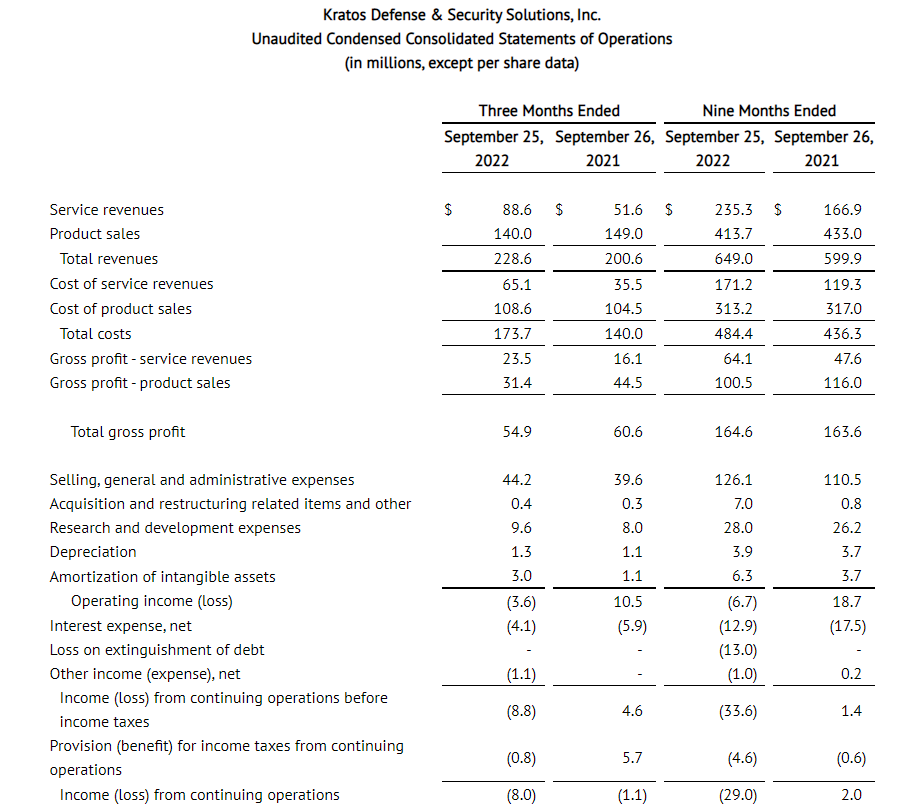
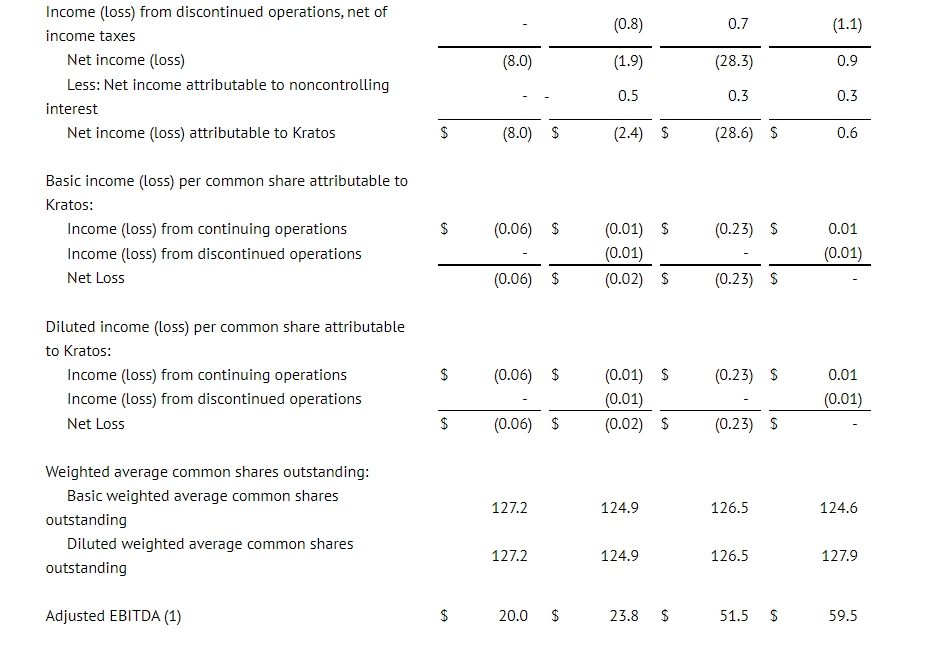
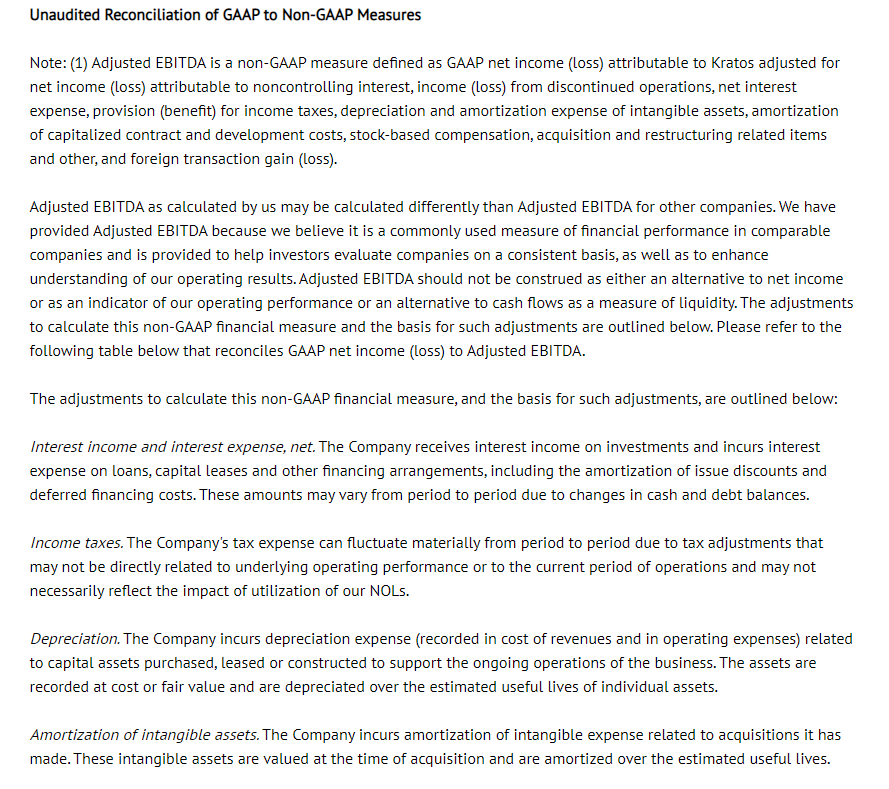
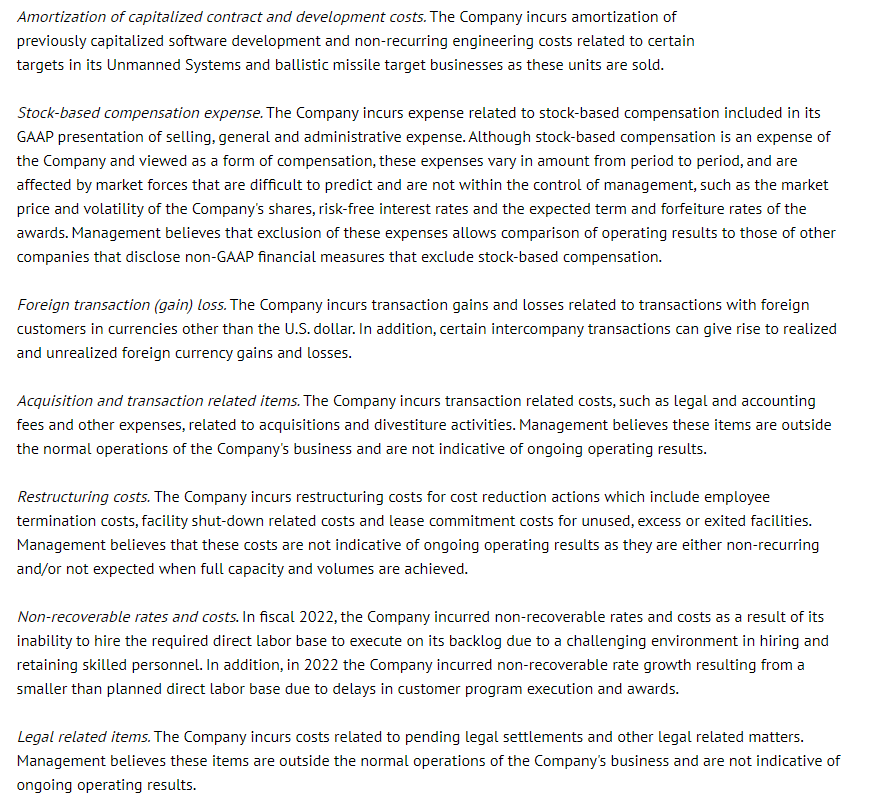

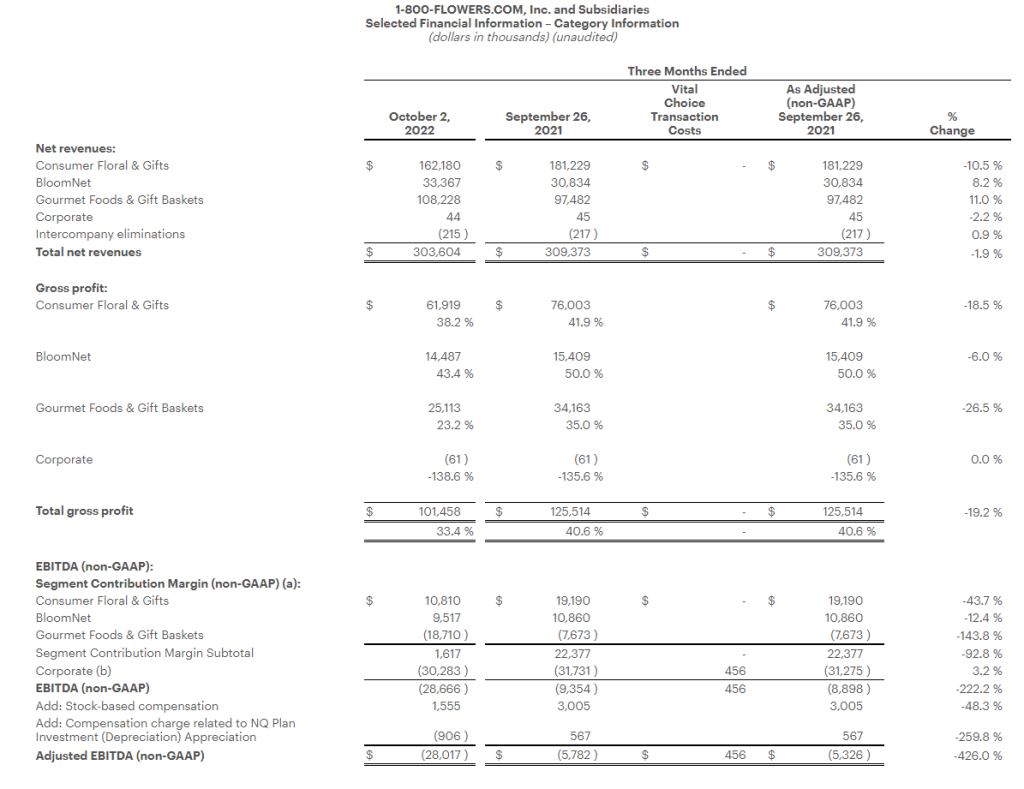
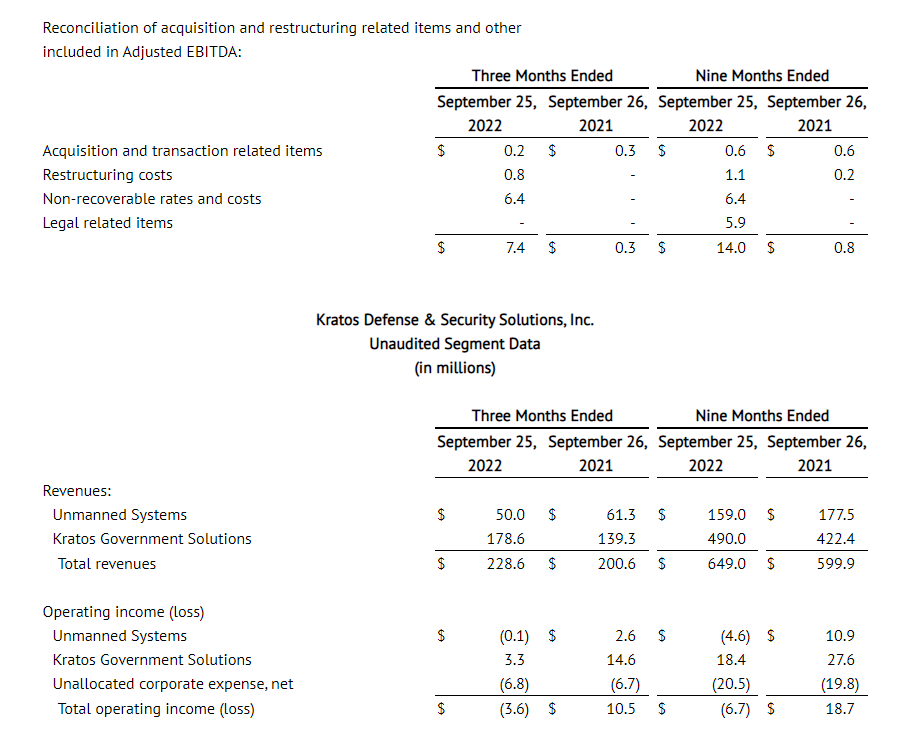


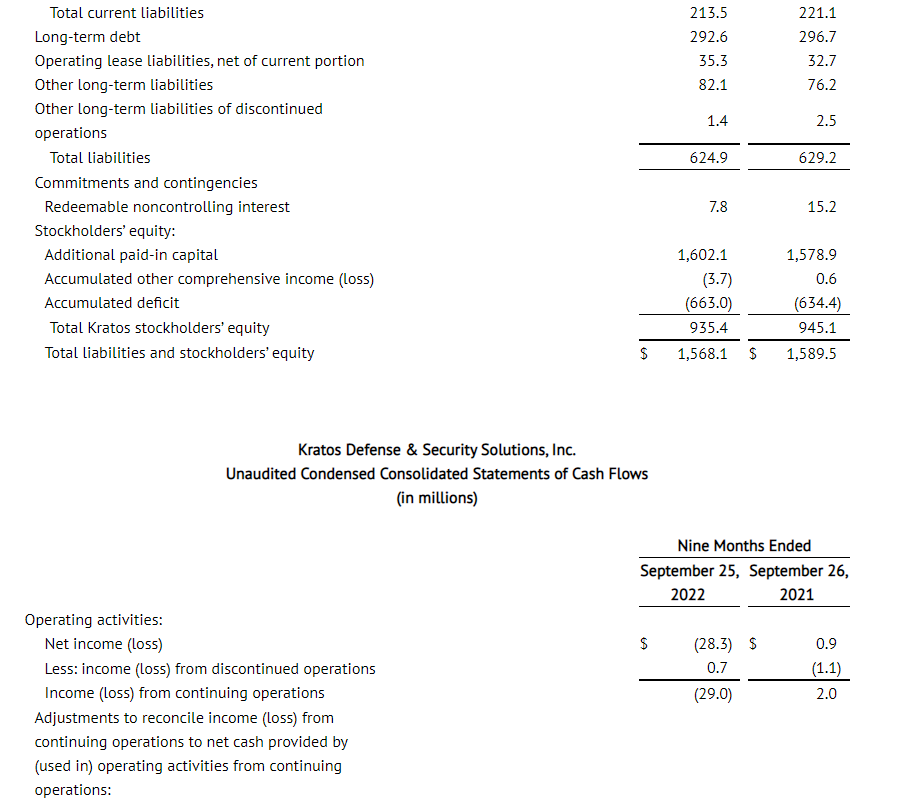
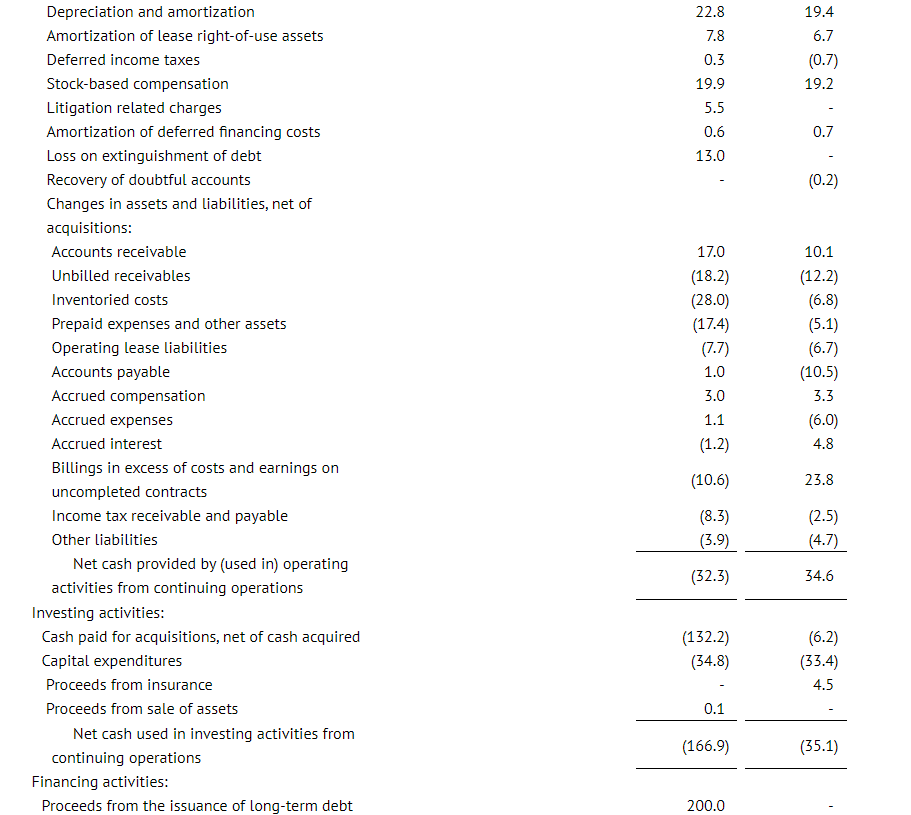
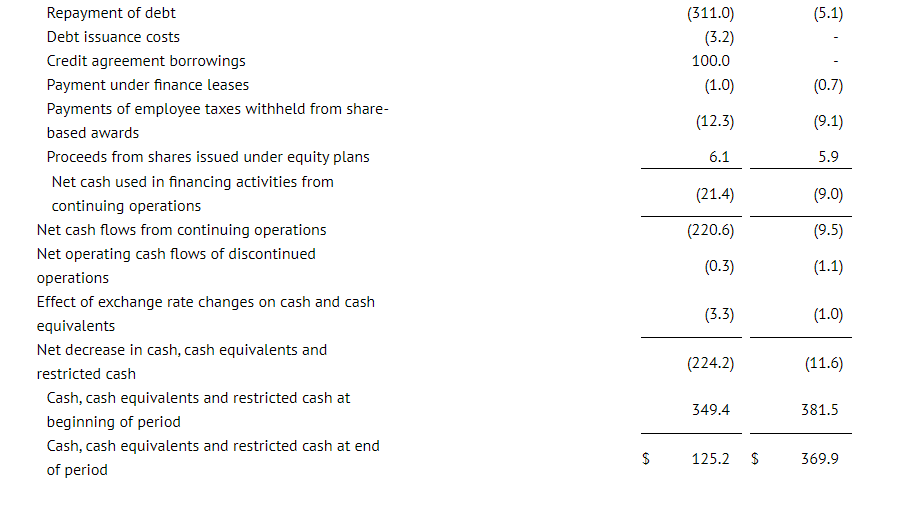
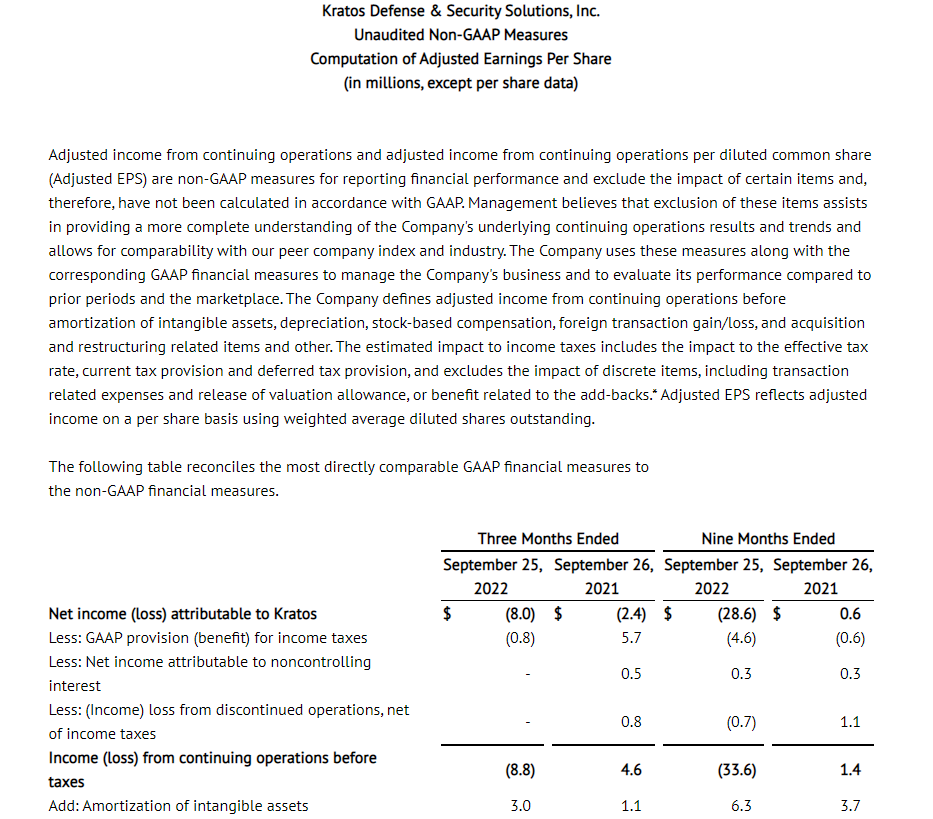

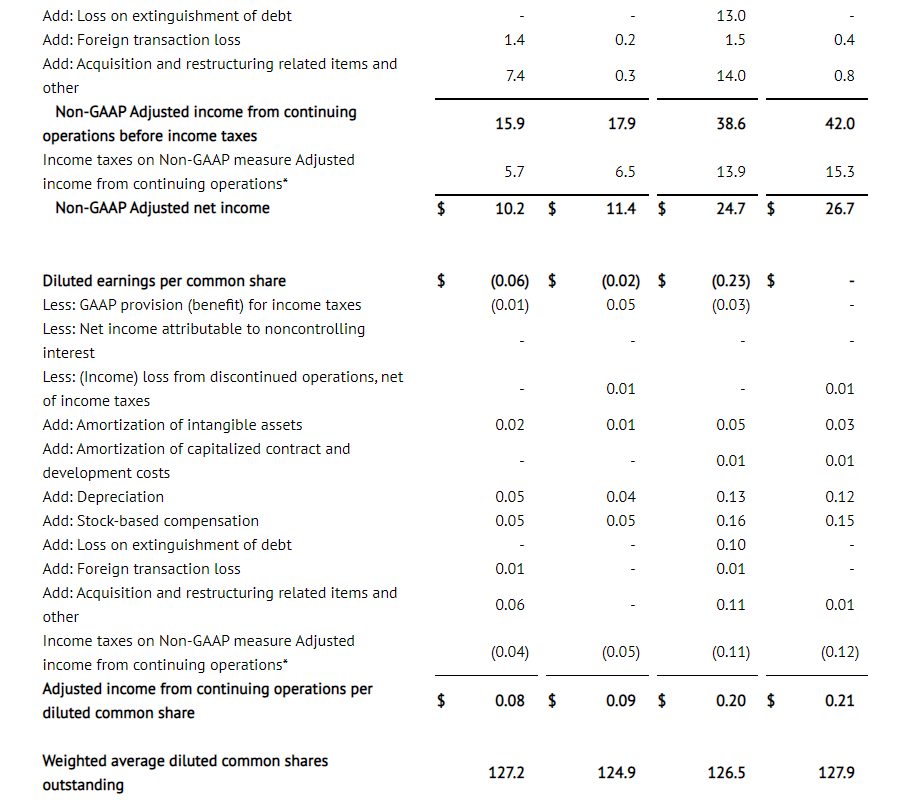
*The impact to income taxes is calculated by recasting income before income taxes to include the add-backs involved in determining Adjusted income from continuing operations before income taxes and recalculating the income tax provision (benefit), including current and deferred income taxes, using the Adjusted income from continuing operations before income taxes. The recalculation also adjusts for any discrete tax expense, including transaction related expenses and the release of valuation allowance, or benefit related to the add-backs.